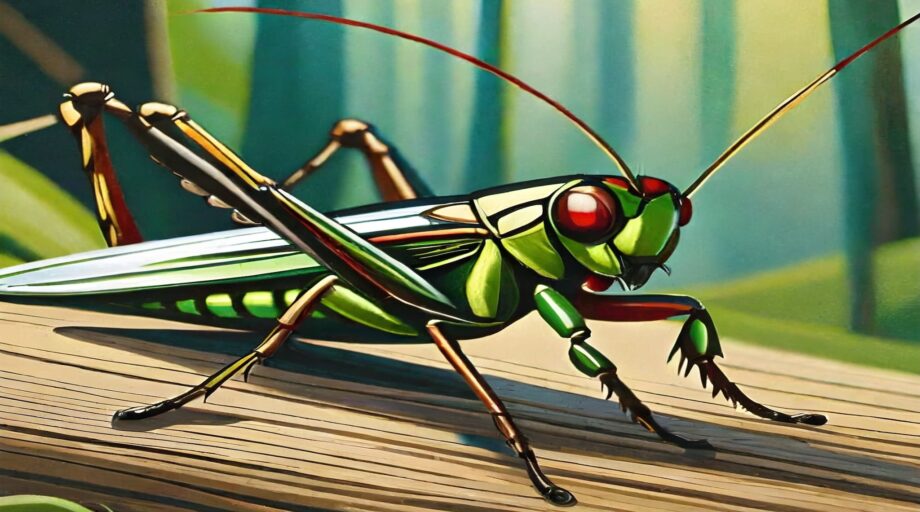LAST WEEK: Wang Lijun travels to San Francisco. Gabriel makes his living selling necklaces in the Fates’ store.
Read last week’s installment here. See all installments here. Read the next installment here.

Chapter 60
Jim
Catskills — 1985
The Love Song of the Mole Cricket
Summer in the Onteoras: the days long and warm, the air humming with insects. Squirrels dangle from branches trying to steal seeds from the bird feeders that Jim has hung from the pines around his porch. The steep mountains surrounding his cottage are carpeted with flowers and shaded by alder, aspen, and beech.
“The hills are still beautiful,” Jim hears a voice in the wind say. “The woods still lovely, but I wish you could have seen this forest in the early eighteen hundreds. Giant hemlocks, one hundred feet tall, covered these ridges like spirits of the earth made manifest.
“It was the kind of place that made you feel that the clearest path to understanding is through a primal wilderness. It wasn’t so much the beauty or the peace that cleansed the heart, as that subtle quality of air that emanates from ancient trees, transforming and renewing the soul.
“Sadly, it’s much easier to create a desert than a forest. By eighteen-fifty, most of the hemlocks had been chopped down, their acidic bark stripped from their trunks to tan leather.
“The naked bones of the hemlocks still lie throughout these mountains. You can see their stumps, many three or four feet across, like mossy tombstones rising out of slender, pale beech groves.”
“Who are you?” Jim asks, but he thinks he knows. He thinks he recognizes this voice from a distant past, over twenty years ago and more than half a lifetime away.
But no one answers. The voice is still, the wind just a wind, the only sound the squabbling of Yellow Warblers, Red and Purple Finches, Indigo Buntings, and Rose-Breasted Grosbeaks looking for seeds in the once hemlock, now beech, wood, serenading dawn and dusk with liquid song.
In the morning when Jim goes to work in the barn, welding screws, twisting forks, and molding nails into wolves, crows, hawks, and coyotes, Scarlet Tanagers flash from tree to tree, bright as flying apples.
At night, lying out on his porch, he watches the stars. His cottage is old and small, the porch a feast for woodlice and beetles. But Jim doesn’t mind. His frame is so slight the grass doesn’t even bend when he walks. He feels he’ll never tire of seeing the stars, laid out like a pathway to dreams.
Sometimes, one streaks across the sky leaving a brief trail of dust and dreams. Jim lays there, so quiet that nightjars rest on his chest. So still, deer lick salt from his fingers. So serene, rocks talk to him. He doesn’t understand them, but sometimes silence is louder than words, empathy more cogent than intellect.
Jim listens to crickets, measuring the rhythm of the night. He remembers River’s uncle Ryo telling him that if he counted the number of chirrups he could hear in fourteen seconds, and added forty, he’d get the temperature.
Jim counts and adds. Sixty-nine degrees, Jim smiles. Kinda useless knowledge, being able to calculate the exact temperature. If you get lost in the woods, you know if you need a fire or to find shade. Knowing the temperature is not a skill that will help you survive a blizzard. You die with a number on your lips is all. Maybe crickets are reincarnated accountants.
A male cricket chirps nearby, faithfully recording the temperature. He is not a reincarnated accountant and rather resents the suggestion. The world is, after all, made of numbers: trees carefully calculate where to best find sun, pinecones and plants order their leaves and their scales with numerical precision. The cricket admires the truth in formulas and the simplicity of numbers. A number does not drop soft as a wish or sweet as love. It does not drift like a feather, fall like a stone—it just is. Numbers are truth in art.
The cricket is much more artist than accountant. Why do humans always imagine that other beings are reincarnated humans? he wonders.
Just then a female hops up, ending further speculation, action being, at that moment, of more import than ideas.
“Under the base of the cricket’s front wing,” Ryo whispers, “is a thick, ridged vein strong as a file, a weak file, but a file, nonetheless. The top of his wing is hard and stiff. While contemplating calculation and reincarnation, this cricket’s been fiddling for a female, bowing the file of one wing across the hard top of the other. He is right-winged, as most crickets are. The thin, papery portions of his wings vibrate, amplifying the sound.
“But this is a mole cricket—wing application is not enough for him. Mole crickets are the rock stars of the cricket world. He is fiddling from inside of a megaphone-shaped entrance of the tunnel he has excavated. When he fiddles from inside his foyer, he can be heard for more than a mile around. He goes to eleven.”
Jim giggles. Figures I’d get haunted by a ghost who quotes Spinal Tap.
“When the female hops up, all coy and demure in a pale green exoskeleton that emphasizes her eyes,” Ryo continues, “he is set adrift in a sea of desire. He immediately begins to chirp a courtship song of love, fulfillment, and regeneration.”
Jim stays out, watching the stars for another hour. He doesn’t know why River’s dead uncle should be talking to him, but he’s not worried, or even particularly surprised. Mechanics that vanish into nowhere, memories that draw on his windshield—life is getting weirder and weirder. But he feels at peace. Reality offers nothing but hard edges and sharp endings. He prefers voices in the night, crickets, and stars. By the time he is ready for bed, the cricket has lulled his lady to sleep with a post-copulatory serenade.
Chapter 61
San Francisco — 1985
Dire Consequences
Medical Report on River Jones, Caucasian Male, 36.
Mr Jones appears to have been mauled by a wild animal. His body shows evidence of teeth marks and claw marks. The wounds are uncommon. The marks resemble those made by the gray wolf, Canis lupus, but these marks appear to have been inflicted by a much larger species. This species is unknown. No species of such size and strength is thought to be currently extant. The size of the teeth and claw wounds indicate the animal to have been the size and weight of a dire wolf, Canis dirus, an extinct carnivorous mammal. Despite superficial similarities to the Gray Wolf, there are significant differences between the two species. Canis dirus is not the direct ancestor of any species known today. Dire wolves have been extinct for 10,000 years.
Watch the author read this week’s installment in the video below:

NEXT WEEK: Out of the earth, up through the floor, dust rises. It clings together, forming a translucent woman.
Edited by Mitchelle Lumumba and Sophie Gorjance.
E.E. King is cohost of the MetaStellar YouTube channel's Long Lost Friends segment. She is also a painter, performer, writer, and naturalist. She’ll do anything that won’t pay the bills, especially if it involves animals. Ray Bradbury called her stories “marvelously inventive, wildly funny and deeply thought-provoking. I cannot recommend them highly enough.” She’s been published widely, including Clarkesworld and Flametree. She also co-hosts The Long Lost Friends Show on MetaStellar's YouTube channel. Check out paintings, writing, musings, and books at ElizabethEveKing.com and visit her author page on Amazon.

